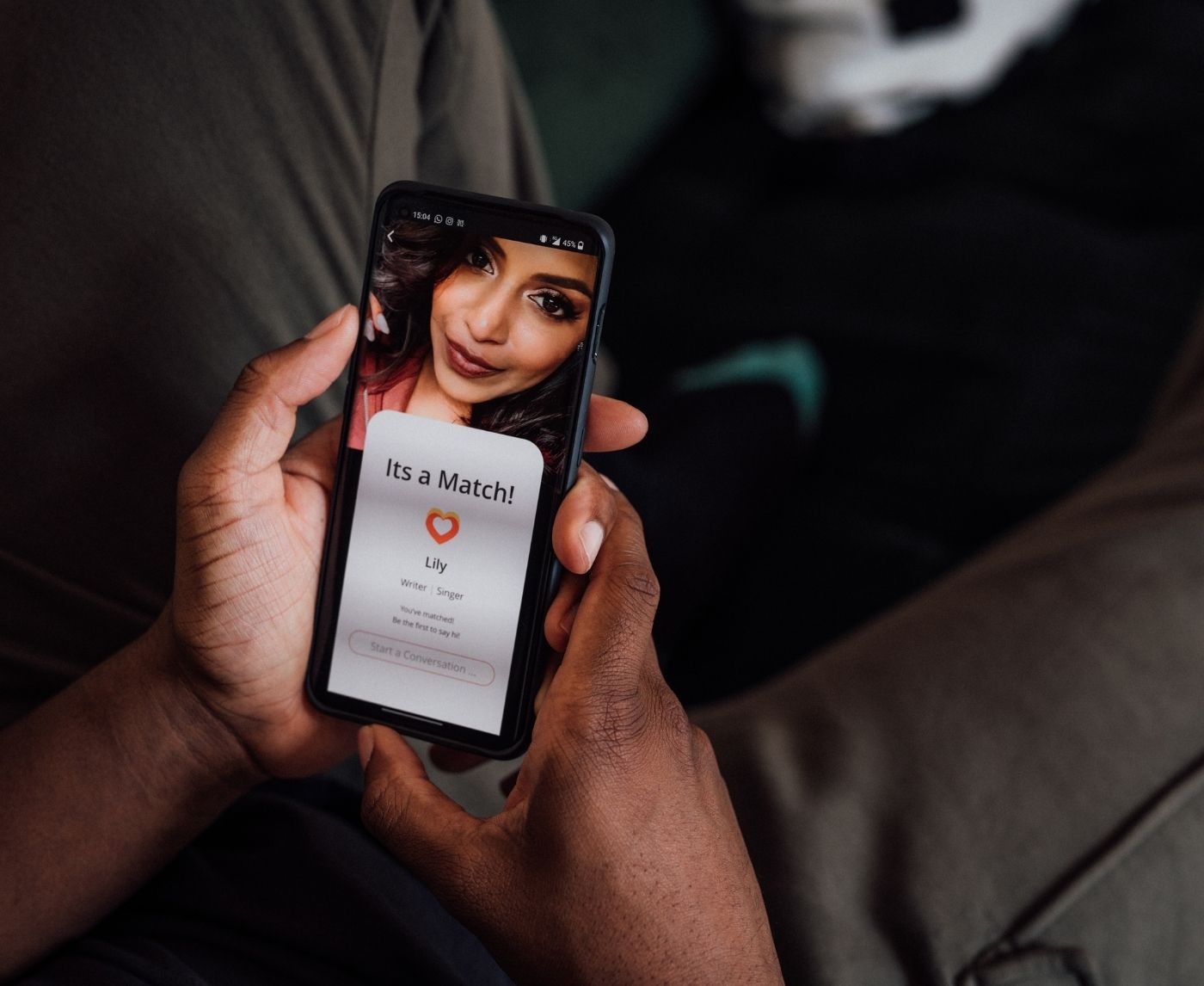Quick Answer: For people who have more than one partner, the best at-home STD test kits are combo panels that check for several infections at once. They are shipped discreetly and give results quickly, usually within minutes or a few days, depending on the type. Choose rapid tests for quick answers or mail-in kits for lab-quality accuracy.
Why This Isn’t Just About You (And That’s a Good Thing)
Let’s be real: testing isn’t just for peace of mind, it’s for your entire web of connections. In non-monogamous or casually sexual networks, you’re not just testing for yourself. You’re protecting every partner, their partners, and anyone downstream. It’s a ripple effect of responsibility that starts with swabbing your throat or peeing in a cup.
Take Jordan, 32, who’s been seeing two people for a year and sleeping with others sporadically. “It’s not about guilt,” they say. “It’s about being honest with the people I care about. I test every six weeks because I don’t want to play roulette with someone else’s body.”
That’s the thing, routine testing is intimacy. It says, “I want to keep doing this, and I want to keep us both safe.” At-home kits make that routine possible without forcing you into fluorescent clinic lights or awkward waiting rooms.
What Counts as a Real STD Test?
Not all tests are the same. When you look at options for home testing, you'll see that there are two main types: rapid tests and mail-in lab kits. Like a COVID test, rapid tests use lateral flow technology. You take a swab, add a reagent, and read the result in 10 to 15 minutes. These are great for quick checks and can find infections like HIV, syphilis, and sometimes chlamydia or gonorrhea, depending on the brand.
Mail-in kits give you more information. You send a sample of urine, a swab, or blood to a lab and get the results back in one to five days. These tests usually look for more than just HIV, chlamydia, gonorrhea, trichomoniasis, syphilis, and even hepatitis B or herpes. They're great if you get tested often or after being around someone who has it.
According to CDC screening recommendations, sexually active people with multiple partners should test for chlamydia, gonorrhea, and HIV at least once a year, more often if exposure is frequent. That’s why combo kits matter.
One option worth considering is the Combo STD Home Test Kit, which checks for multiple infections with one discreet package, perfect for those with overlapping or frequent partners.

People are also reading: The Biggest Myth in Lesbian Sex We Don’t Need to Worry About STDs"
Choosing Between Rapid, Mail-In, and Clinic Testing
Say you just hooked up with someone new and now you’re spiraling. Do you need a rapid test, a mail-in kit, or should you haul yourself to urgent care? The answer depends on timing, symptoms, and emotional bandwidth.
Rapid tests are perfect when you need immediate feedback, say, before meeting a partner later that day or to quell post-hookup anxiety. Mail-in kits give you more accuracy and often cover more infections, but take longer. In some situations, like when you have visible symptoms, need treatment, or want options that are covered by insurance, clinics are still the best choice.
| Testing Type | Privacy Level | Speed | Accuracy | Best For |
|---|---|---|---|---|
| At-Home Rapid Test | High (results stay with you) | 10–20 minutes | Moderate to High | Quick reassurance after a new partner |
| Mail-In Lab Kit | High (discreet, online portal) | 2–5 days | High (lab-grade precision) | Routine testing for multiple STDs |
| Clinic Visit | Varies (insurance records possible) | Same day to a few days | Very High | Symptoms, treatment needs, official documentation |
Table 1: Comparing STD testing types by speed, privacy, and best use cases. Each option serves different emotional and diagnostic needs depending on where you are in your exposure cycle.
Order Now $119.00 $294.00 Check Your STD Status in Minutes
Test at Home with Remedium
6-in-1 STD Test Kit




For all 6 tests
Timing Isn’t Just Science, It’s Strategy
You can test too early. You can test too late. But the sweet spot? That’s where peace of mind lives.
Let’s say you had unprotected sex with two different people last weekend. By Tuesday, you’re spiraling, refreshing forums and Reddit threads. You want to test now, but here’s the kicker: most STDs won’t show up reliably within 24–48 hours. Your anxiety is real, but your immune system needs time to produce enough virus or antibodies to be detectable.
This is where window periods come in. It’s not just medical lingo, it’s your testing game plan. Think of it like cooking meat: cut it open too early and it looks raw, but give it time and the inside tells the truth.
| Infection | Window Period | Best Time to Test |
|---|---|---|
| Chlamydia / Gonorrhea | 5–14 days | 14+ days after exposure |
| HIV (Ag/Ab test) | 18–45 days | 30+ days for highest accuracy |
| Syphilis | 21–42 days | 6+ weeks after exposure |
| Trichomoniasis | 5–28 days | 14–21 days for reliability |
| Herpes (IgG antibody) | 21+ days | 6–12 weeks post-exposure |
Table 2: STD window periods. Testing too early can give false negatives, even if you were exposed. Use this timing chart to plan accurate, stress-reducing tests.
The Day 5 Panic Is Real (But Here’s What to Do)
Lena, 26, had her first threesome over a long weekend. Condoms were involved, but she couldn’t stop replaying a single slip during oral sex. “I was sweating bullets by Tuesday,” she says. “I overnighted a rapid test and it came back negative, but something told me to test again.” She repeated the test two weeks later with a combo kit and found a positive result for chlamydia.
What Lena experienced is common: the early-test false sense of security. Testing on day 5 isn’t useless, especially if you’re symptomatic, but it’s not definitive. Most at-home users feel better just having a test in hand, but it’s the retest that really brings clarity.
If you’re testing after multiple partners, especially new ones, treat the first test like a snapshot and the second like a confirmation. Early peace of mind + delayed certainty = responsible testing cycle.
And yes, that means stocking more than one kit if your schedule is packed, or unpredictable.
How Often Should You Test If You’re Actively Dating?
This depends on your lifestyle, partner count, and how consistent your barrier use is. The CDC recommends annual testing for HIV and chlamydia for sexually active adults, but for people with multiple partners, especially those in open relationships, sex work, or dating app culture, quarterly or even monthly testing might be smarter.
Think of it like oil changes for your body. If you’re high mileage, you test more often. If you’re low mileage but had a weird sound recently, test sooner. No shame, just strategy.
Many non-monogamous folks build testing into their rhythm. Chris, 39, a polyamorous father of two, schedules a combo test the same week his kids go to their mom’s. “It’s a ritual now,” he says. “I clean the house, do laundry, test, and chill. Keeps me sane.”
Building your own testing cadence isn’t just responsible, it’s empowering. It gives you control in a world that’s often messy and unpredictable. And it keeps your partners safer without awkward convos that start with “So, uh, I probably should’ve told you…”
If your head keeps spinning, peace of mind is one test away. You can order a Combo STD Home Test Kit today, shipped discreetly and made for people like you, smart, active, and taking no chances.

People are also reading: You Didn’t Kiss It Goodbye Oral Chlamydia Is Real
What’s Actually in a Combo STD Test Kit?
Let’s decode the term “combo kit.” Sounds impressive, right? But what does it really mean? Combo kits vary wildly between brands, and not all of them test for the same infections. Most commonly, they include chlamydia, gonorrhea, HIV, and syphilis. Some also add trichomoniasis or hepatitis B, but very few include herpes unless you specifically seek it out.
That matters when you’re testing after multiple partners, especially if you’ve had oral, anal, or genital contact. You could be infected in a site that isn’t being tested unless you opt for a throat swab or rectal swab. At-home kits don’t always give you those options.
Here’s a quick overview of what the average combo kit covers, and what to look out for.
| Infection | Usually Included in Combo? | Sample Type | Needs Special Request? |
|---|---|---|---|
| Chlamydia | Yes | Urine or swab | No |
| Gonorrhea | Yes | Urine or swab | No |
| HIV | Yes | Fingerstick or oral fluid | No |
| Syphilis | Yes | Blood | No |
| Trichomoniasis | Sometimes | Urine or swab | Depends on brand |
| Herpes (HSV-2) | Rarely | Blood (IgG antibody) | Yes |
| Hepatitis B/C | Occasionally | Blood | Yes |
Table 3: What’s inside a combo kit? Not all STD test panels are the same. Always read the fine print to ensure it matches your risk profile and exposure sites.
Order Now $129.00 $343.00 Check Your STD Status in Minutes
Test at Home with Remedium
7-in-1 STD Test Kit




For all 7 tests
What If the Line Is Faint? (Or Nothing Shows Up?)
Rapid tests can feel like emotional landmines. You do the swab, wait 15 minutes, stare at the strip, and then... a barely-there line appears. Or maybe nothing does. Do you have an STD? Did you mess it up? Is the test broken?
Here’s what to know: faint lines still count as positives, especially with tests for HIV or syphilis. But they do warrant a follow-up, especially if you’re asymptomatic. If the control line doesn’t show, the test is invalid and should be repeated immediately with a new kit.
Jamie, 29, got a ghost-line on their rapid HIV test after a new partner weekend. “I felt my stomach drop,” they said. “I tested again with a lab kit and it was negative, but I still followed up at a clinic. That one blurry line gave me a wake-up call.”
Home tests are powerful tools, but they’re still part of a bigger testing ecosystem. If anything feels unclear, repeat or confirm. Your peace of mind is worth more than a single cassette’s interpretation.
How to Talk to Partners Without Sounding Like a PSA
This is where many freeze. You’re testing regularly, being responsible, and now you have to bring it up. You don’t want to sound paranoid, controlling, or worse... “unclean.”
But talking about testing is sexy. It shows you care. It shows you’re not afraid of transparency. Start with your own status, not theirs. “Hey, I get tested every month, last one was clear, doing another soon. Want to do one together?” Or: “I just did a home test after the weekend. Feels good to know. You ever tried those kits?”
Use it as an invitation, not a confrontation. And don’t wait until there’s a symptom. Build it into the way you date. If you’re open about your music taste, your plans for the weekend, and your brunch spot, why not your testing rhythm?
STD talk doesn’t have to kill the mood. In fact, for many, it deepens trust. Especially when paired with a kit that ships to their door like any other health product. The vibe? "Let’s both feel good about this.”
Take back control of your health. Try a doctor-trusted, at-home Combo STD Test Kit, because being safe is hotter than pretending nothing happened.
FAQs
1. How soon is too soon to take an STD test after sex?
If you tested the day after a hookup, you’re not alone, but you’re probably testing too early. Most infections need a few days (or weeks) to show up. Chlamydia and gonorrhea can sometimes be caught after 5–7 days, but for others like HIV or syphilis, it’s more like 3–6 weeks. Early testing can ease your mind, but don’t stop there. Retest after the window period if you want real clarity.
2. Can I trust an at-home test if I’ve had multiple partners recently?
Yes, and that’s exactly who these kits were designed for. If your dating life is busy or non-monogamous, combo kits help you stay ahead without the stress of appointments or judgmental waiting rooms. Just make sure you’re choosing a kit that covers all the infections relevant to how and who you’ve been with.
3. What if I have no symptoms but still feel... off?
Listen to your gut. Many STDs show no symptoms for weeks, or ever, but that doesn’t mean you’re in the clear. A low-key itch, a weird discharge, or just feeling “off” after a weekend can be your body asking for attention. Get tested. If it’s negative, awesome. If not, now you know. Either way, your peace of mind is worth way more than waiting it out.
4. Do these kits test for everything?
Not quite. Most combo kits check for HIV, chlamydia, gonorrhea, and syphilis. Some add trich, a few throw in hepatitis B or C, and almost none include herpes unless you hunt down a specialty kit. Bottom line: always check what’s included. If oral or anal sex was part of the mix, you might need site-specific tests too.
5. How often should I test if I’m not monogamous?
Think quarterly at minimum. Monthly if you’re frequently meeting new partners or doing things barrier-free. The rule of thumb? If you’re asking “Should I test again?”, that’s probably your sign. Many people build testing into their lifestyle, like brushing teeth or booking haircuts. Make it normal. Make it yours.
6. What’s up with faint lines or unclear results?
A faint line is like a whisper, it still counts. On a rapid test, any line in the result zone usually means a potential positive. No control line? That’s an invalid test. Trash it, retest. Still unsure? Mail-in kits or clinic follow-ups can confirm. Don’t panic, but don’t ignore it either.
7. Should I still test if I used protection?
Yep. Condoms lower the risk, but they’re not forcefields. Skin-to-skin infections like herpes and syphilis can slip through. Oral sex can spread things too, even if you were “careful.” Testing isn’t about catching someone lying, it’s about catching what condoms might miss.
8. How do I bring up testing with a new partner without it getting awkward?
Lead with you. Say “I test regularly, want to do one with me?” Or “I grabbed a home kit after last weekend, ever used one?” Keep it chill, like asking someone to split a Lyft. You’re not accusing them; you’re inviting them into a safer experience. That’s not awkward, that’s hot.
9. What if I test positive at home?
First: breathe. Most STDs are treatable. Next step? Confirm the result (if needed), get treated, and talk to your partners. You don’t have to do it alone. Some kits come with telehealth options or scripts to help you notify partners without spiraling. You’re still worthy. You’re still safe. You’re still you.
10. Is this stuff really private?
Absolutely. Discreet shipping. No clinic files. No awkward receptionist. Just you, your test, and your results. Unless you decide to share them, they stay between you and your Wi-Fi password. This is your body, your business, your boundaries.
You Deserve Answers, Not Assumptions
If you’re dating more than one person, you’re not reckless, you’re honest. You’re living your truth. And that truth deserves tools that support it, not shame it. At-home STD testing is one of those tools. It bridges your lifestyle with your values: care, communication, clarity.
Whether you’re managing poly dynamics, hookup culture, or the dating-app carousel, the best protection is knowledge. Every swab, every test, every result is a step toward power, not panic.
Don’t wait and wonder, get the clarity you deserve. This at-home combo test kit checks for the most common STDs discreetly and quickly.
How We Sourced This Article: We used the most up-to-date advice from top medical groups, peer-reviewed research, and reports of real-life experiences to make this guide useful, kind, and correct.
Sources
1. CDC – Getting Tested for STIs
2. CDC – STI Treatment Guidelines
3. CDC – HIV Testing Types and Timing
4. Fourth-Generation HIV Rapid Tests: Sensitivity & Specificity
5. Rapid HIV Antibody Tests: False Positives and Negatives
6. AIDSmap – How Accurate Are Rapid Point-of-Care HIV Tests?
About the Author
Dr. F. David, MD is a board-certified infectious disease specialist focused on STI prevention, diagnosis, and treatment. He blends clinical precision with a no-nonsense, sex-positive approach and is committed to expanding access for readers in both urban and off-grid settings.
Reviewed by: Renata Kim, NP | Last medically reviewed: September 2025
This article is for informational purposes only and should not be seen as medical advice.










